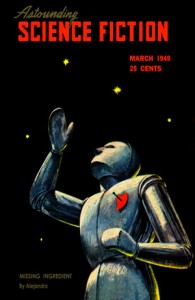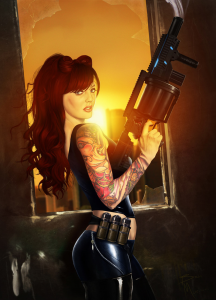SHE’S IN COMMAND SHE’S IN CONTROL SHE’S BAD AND MEAN AND ON A ROLL!
Mary Sue gets where she gets without training, without experience, without bothering to learn anything about armaments, science, geology, terrain, or people. She becomes an officer without learning anything about leadership skills, she becomes a commander simply by commanding things be done. Hardened space sergeants rush to do her will.
My friend and author Caroline Woodward wrote a book with a truck-driver main character, and she actually found somebody who would teach her to drive an 18-wheeler, at least for a short distance, and she learned to back it up.
That’s Woody pressure washing the fuel tanks at the lighthouse landing pad. She and her husband Jeff are lighthouse keepers.
My last experience with a Mary Sue type in sci-fi was a doozy. I will not name the book because the author is actually pretty good. And as I said in my last post on this subject, the e-book list is actually the new slush pile.
And the Amazon commenters, bless them, are the new ‘junior assistants’. I noticed on this latest Mary Sue I just read that many were giving advice to the author, they were trying to be helpful, giving her compliments as well as pointing out absurdities, making suggestions etc. It was really nice. Heartwarming.
Different stories require different toolboxes. different skills.
So — tools: — Pace your book. Use narrative summary to slow it down (probably in a flashback) or an alternative scenario. The Martian‘s hero is constantly in danger of his life. This is very tense reading, and it is all in direct scenes told in the first person. It is slowed down by — not narrative summary — but by shifting the scene to the space center where at least people’s lives are not in imminent danger and it shifts to third person as a relief from the intensity of first person. The pacing — shifting between these two scenarios — is excellent.
—- Science fiction inevitably means world-building. This means you are going to have to know something about different classes of people, different geographies, perhaps about weapons, vehicles, food sources, perhaps even animals. It seems to me that most of the new sci-fi e-books are written by people in urban middle-class, upper-middle-class, comfortable surroundings who never get out of their small social circle. So work at it. If you have never been in a slummish area, if you have never worked with large animals or hiked mountains or driven heavy equipment or been around military people or people of other cultures, think about it.
All in all, the e-book list is exciting and promising: the reviewers on Amazon are really quite generous and helpful. That in itself is amazing.








